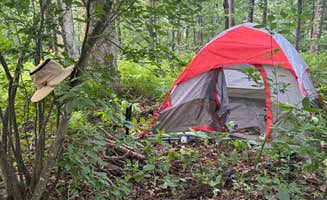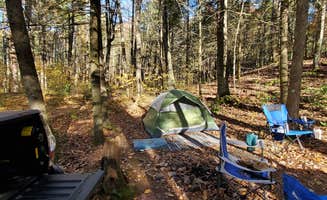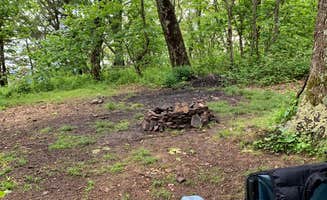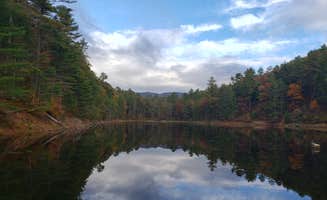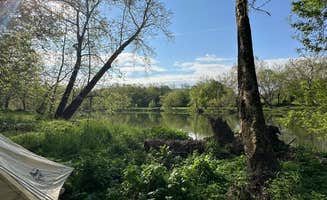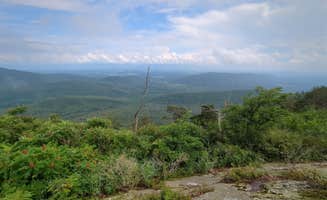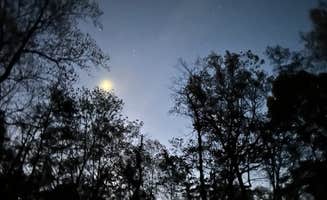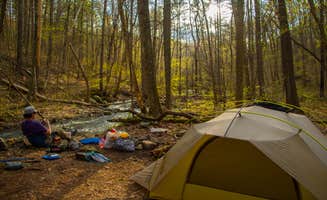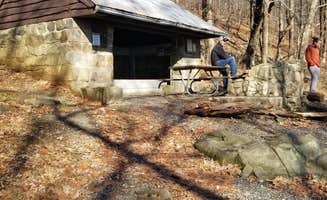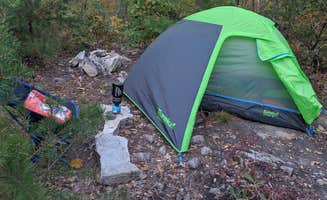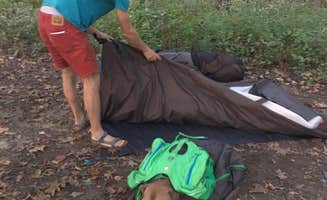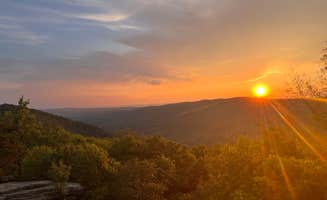Dispersed camping near Keezletown, Virginia offers campers access to nearly 8,000 acres of George Washington National Forest terrain. Located in the Ridge and Valley province of the Appalachian Mountains, these sites range from 1,400 to 4,300 feet in elevation. Streams and creeks throughout the region typically run strongest in spring, with lower water levels during late summer and early fall, affecting both water collection opportunities and stream crossing difficulty.
What to do
Fishing opportunities: Switzer Lake offers trout fishing, particularly during stocking season. "The fishing is decent, and we have caught some trout there in the past. There is a boat ramp at the lake, but only electric motors and paddle boats are allowed," explains Emil D., who has camped at Switzer Lake Dispersed Camping for over 10 years.
Hiking networks: Several well-maintained trails can be accessed directly from campsites. "Where boots and run in to check out the various sites. I'm sure there would be even cooler ones," suggests Matthew F. at Switzer Lake Dispersed Camping, referring to exploring beyond the immediate area.
Wildlife viewing: Black bears are active throughout the region, with multiple reported sightings. "We have encountered a bear at or around the campsite 3 times," notes a Switzer Lake camper who visits regularly, highlighting the importance of proper food storage.
Creek exploration: Many sites offer direct creek access for wading or cooling off. At Gandy Creek Dispersed Camping, "several spots along the creek are deep enough for swimming," according to Sandra B., who visited the site in August.
What campers like
Campsite variety: The region offers sites with drastically different experiences based on location. "I've camped here probably 12 times over the past 2 years and I seem to always find another awesome spot every time I go. There is a huge variety of spots, starting from huge ones right on the lake to more secluded, smaller spots deeper in the woods along the creek," shares Adam G. about Switzer Lake.
Privacy levels: Many campers appreciate the separation between sites. At Flagpole Knob, "about 5 or so campsites, pretty private. good for a night," notes Nikki A., while adrian F. adds that sites are "very spaced out. Everyone you run into is nice and welcoming."
Summit access: Higher elevation sites provide unique overnight experiences. "If you really wanna be alone this is the spot. Camped up there with just my dog and I doubt there was a single person for miles around. The sunset and sunrise views are insane," says Sydney D. about Flagpole Knob.
Water features: Sites near running water are particularly popular. One camper at Gandy Creek Dispersed Camping describes, "We were closer to the road than we wanted to be but because the past few days had been beautiful spring weather, the area was packed."
What you should know
Road conditions: Access requires varying levels of vehicle capability. For Braley Pond Dispersed Camping, one visitor notes, "this area is fairly low, and the road and sites can easily be soaked, if not underwater after really heavy rains."
Seasonal challenges: Weather conditions shift dramatically with elevation changes. "We needed every layer we brought, including winter hats, puffy jackets, and gloves. During the 6 days we were in the backcountry, we experienced everything from warm summer-like weather to chilly winter winds, both day and night," shares a backpacker in the region.
Site selection timing: Popular spots fill quickly on weekends. At South Fork Shenandoah River, "not too many spaces so it can fill up quick. There is a launch in the middle, so there is a bit of come and go," warns one camper.
Water management: Drinking water is not available at most sites. "There's nothing there so plan ahead for water and bathroom use," advises adrian F. about a site in the region, underscoring the need for water filters or packed water supplies.
Tips for camping with families
Toilet access planning: Most dispersed camping areas lack facilities. At Braley Pond, Dave P. notes, "Picnic/pit toilet area separate from the camping area," which can be important information for families with young children.
Site stability: Look for level, contained sites when camping with children. "Our site was great. It was an established site with a fire ring. It had a large clearing with a pretty flat spot for my tent," shares Matt M. about his experience at Switzer Lake Dispersed Camping.
Wildlife precautions: Make wildlife safety part of your family camping plan. "There are bears here, so lock up your food in the car," advises Emil D. from Switzer Lake Dispersed Camping, adding "We have encountered a bear at or around the campsite 3 times."
Off-peak timing: For a quieter experience with children, avoid weekends. "It's also empty on weeknights," mentions Adam G. about Switzer Lake, suggesting midweek visits may provide a more controlled environment for family camping.
Tips from RVers
Vehicle clearance requirements: Many roads require specific vehicle capabilities. At Little Fort Campground, "Long and winding road to get there with no service so be cautious," warns Zack B., highlighting access challenges.
Site selection for vehicle camping: Look for designated parking areas. Lauren M. at Switzer Lake Dispersed Camping advises, "Since I sleep in my Jeep, I needed a drive in spot. I drove past the lakefront sites and there are a few really nice spots right past the paved bridge on the dirt road."
RV length limitations: Larger rigs face significant access challenges. "Made it up in a stock Subaru Outback. Not difficult but definitely need at least a little bit of clearance," notes Sydney D. about Flagpole Knob, indicating that even modest clearance requirements rule out many larger recreational vehicles.
Communication planning: Cell service is inconsistent throughout the region. A Little Fort Campground visitor notes, "On this app it says T-Mobile access, I'm a T-Mobile customer, no reception at all but drive 5 minutes back down the mountain and you're good to go."


